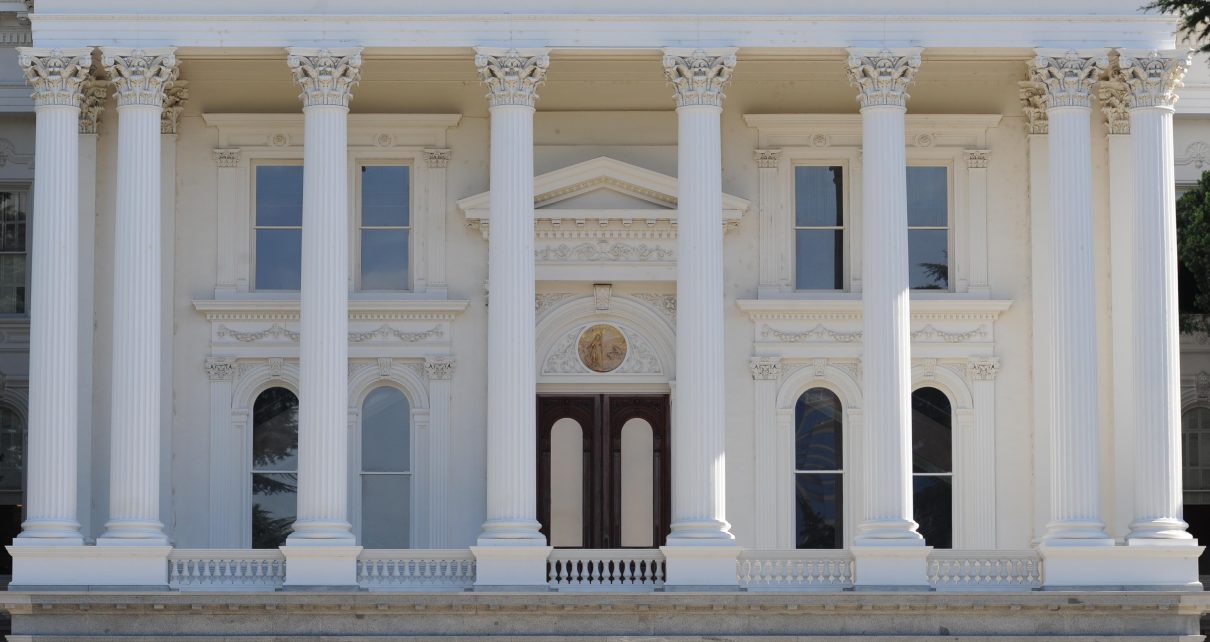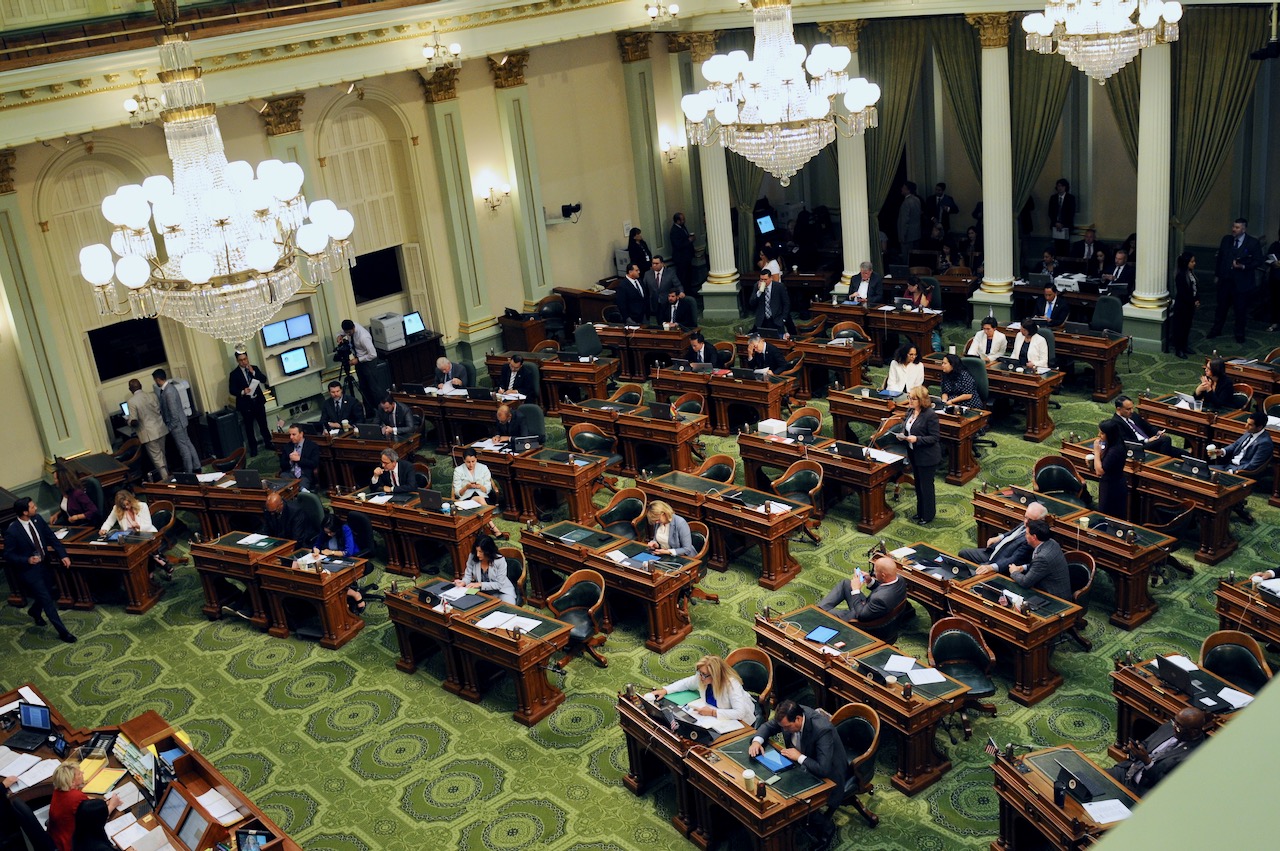
California State Capitol. (Photo: Kevin Sanders for California Globe)
Unique Provisions of California’s Budget Bill – Part VI
The California state budget is the largest in the nation
By Chris Micheli, October 27, 2022 3:30 pm
The California state budget is the largest in the nation, and it also represents the largest bill in page length and number of provisions. While its provisions are too many to cover, there are a number of them that are unique and readers should be aware of them. This article is the sixth in a series.
So, what are some of these unique provisions of California’s Budget Bill?
Approval of Reappropriations and Reversions
This section deals with the necessary approval of reappropriations and reversions of funds in the California Budget Bill. It provides a statement of legislative intent concerning flexibility in granting approval administratively for appropriations being reappropriated or reverting to the relevant fund. Alternatives are provided. The following is an example of this language from a state budget bill:
SEC. 20.00.
(a) It is the intent of the Legislature, in enacting this section, to provide flexibility for the administrative approval of reappropriations and reversions within individual items of appropriation in those instances where the actions are necessary for the efficient and cost-effective implementation of the programs, projects, and functions funded by this act or any prior appropriation. No adjustment shall be authorized under this section to either eliminate any program, project, or function, except when implementation is found to be no longer feasible in light of changing circumstances or new information, or establish any new program, project, or function. This process shall not be used for the Department of Corrections and Rehabilitation.
(b) The Director of Finance may extend the date of availability for encumbrance or expenditure, of any appropriation or reappropriation, or a portion of thereof, from the funds specified in subdivision (f), to no later than three years following the last day the appropriation is currently available for encumbrance if the Director of Finance determines that the department, office, or other state entity requires additional time to complete the original purpose of the appropriation.
Entities Receiving Lottery Funds
This section imposes certain requirements on those state entities that receive State Lottery funding. The following is an example of this language from a state budget bill:
SEC. 24.60.
Each state entity receiving lottery funds shall annually report to the Governor and the Legislature on or before May 15 the amount of lottery funds that the entity received and the purposes for which those funds were expended in the prior fiscal year, including administrative costs. The Department of Education shall report on behalf of K–12 entities. If applicable, the entity shall also report the amount of lottery funds received on the basis of adult education average daily attendance (ADA) and the amount of lottery funds expended for adult education.
Approval of Intraschedule Transfers
This section deals with the necessary approval of intraschedule transfers of funds in the California Budget Bill. It provides a statement of legislative intent concerning flexibility in granting approval administratively for intraschedule transfers. Alternatives are provided. The following is an example of this language from a state budget bill:
SEC. 26.00.
(a) It is the intent of the Legislature, in enacting this section, to provide flexibility for the administrative approval of intraschedule transfers within individual items of appropriation in those instances where the transfers are necessary for the efficient and cost-effective implementation of the programs, projects, and functions funded by this act. No transfer shall be authorized under this section to either eliminate any program, project, or function, except when implementation is found to be no longer feasible in light of changing circumstances or new information, or establish any new program, project, or function.
(b) The Director of Finance may, pursuant to a request by the officer, department, division, bureau, board, commission, or other agency to which an appropriation is made by this act, authorize the augmentation of the amount available for expenditure in any schedule set forth for that appropriation, by making a transfer from any of the other designated programs, projects, or functions within the same schedule. No intraschedule transfer may be made under this section to fund any capital outlay purpose, regardless of whether budgeted in a capital outlay or a local assistance appropriation.
(c) Intraschedule transfers of the amounts available for expenditure for a program, project, or function designated in any line of any schedule set forth for that appropriation by transfer from any of the other designated programs, projects, or functions within the same schedule shall not exceed, during any fiscal year:
(1) Twenty percent of the amount so scheduled on that line for those appropriations made by this act that are $2,000,000 or less.
(2) $400,000 of the amount so scheduled on that line for those appropriations made by this act that are more than $2,000,000 but equal to or less than $4,000,000.
(3) Ten percent of the amount so scheduled on that line for those appropriations made by this act that are more than $4,000,000.
(4) The Department of Transportation Highway Program shall be limited to a schedule change of 10 percent.
(d) Any transfer in excess of $200,000 may be authorized pursuant to this section not sooner than 30 days after notification in writing of the necessity therefor is provided to the chairpersons of the committees in each house of the Legislature that consider appropriations and the Chairperson of the Joint Legislative Budget Committee, or not sooner than whatever lesser time after that notification the chairperson of the joint committee, or the chairperson’s designee, may in each instance determine.
(e) Any transfer in excess of the limitations provided in subdivision (c) may be authorized not sooner than 30 days after notification in writing of the necessity to exceed the limitations is provided to the chairpersons of the committees in each house of the Legislature that consider appropriations and the Chairperson of the Joint Legislative Budget Committee, or not sooner than whatever lesser time after that notification the chairperson of the joint committee, or the chairperson’s designee, may in each instance determine.
Approval of Augmentations
This section deals with the necessary approval of augmentations for expending unanticipated federal funds in the California Budget Bill. It provides a statement of legislative intent concerning flexibility in granting approval administratively for the expenditure of unanticipated federal funds or other nonstate funds. Alternatives are provided. The following is an example of this language from a state budget bill:
SEC. 28.00.
(a) It is the intent of the Legislature in enacting this section to provide flexibility for administrative approval of augmentations for the expenditure of unanticipated federal funds or other nonstate funds in cases that meet the criteria set forth in this section. However, this section does not provide an alternative budget process, and proposals for additional spending ordinarily should be considered in the annual State Budget or other state legislation. Specifically, augmentations for items which the administration had knowledge to include in its 2022–23 budget plan should not be submitted through the process provided by this section. Augmentations for items which can be deferred to the 2023–24 fiscal year should be included in the administration’s 2023–24 fiscal year budget proposals.
(b) The Director of Finance may authorize the augmentation of the amount available for expenditure for any program, project, or function in the schedule of any appropriation in this act or any additional program, project, or function equal to the amount of any additional, unanticipated funds that the director estimates will be received by the state during the 2022–23 fiscal year from any agency of local government or the federal government, or from any other nonstate source, provided that the additional funding meets all of the following requirements:
(1) The funds will be expended for a purpose that is consistent with state law.
(2) The funds are made available to the state under conditions permitting their use only for a specified purpose, and the additional expenditure proposed under this section would apply to that specified funding purpose.
(3) Acceptance of the additional funding does not impose on the state any requirement to commit or expend new state funds for any program or purpose.
(4) The need exists to expend the additional funding during the 2022–23 fiscal year.
(c) In order to receive consideration for an augmentation, an agency shall either (1) notify the director within 45 days of receiving official notice of the availability of additional, unanticipated funds, or (2) explain in writing to the director why that notification was infeasible or impractical. In either case, the recipient agency shall provide the director a copy of the official notice of fund availability.
(d) The director also may reduce any program, project, or function whenever the director determines that funds to be received will be less than the amount taken into consideration in the schedule.
- Trial by the Court in California - December 7, 2025
- Enforcement of Labor Commissioner Judgments - December 6, 2025
- Effect of Emancipation - December 6, 2025



